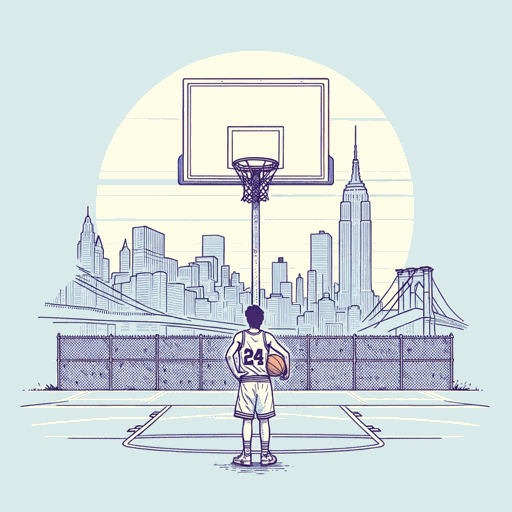31 pages • 1 hour read
Jim CarrollThe Basketball Diaries: The Classic About Growing Up Hip On New York’s Mean Streets
Nonfiction | Autobiography / Memoir | Adult | Published in 1978A modern alternative to SparkNotes and CliffsNotes, SuperSummary offers high-quality Study Guides with detailed chapter summaries and analysis of major themes, characters, and more.
Summary and Study Guide
Overview
The Basketball Diaries: The Classic About Growing Up Hip On New York’s Mean Streets is an autobiography written by Jim Carroll and published in 1978. The book comprises a series of short diary entries which serve as anecdotes and insights into his daily life as a teenager on the streets of New York City in the 1960s. Jim Carroll became a celebrated writer and poet, overcoming his addiction to heroin in the mid-1970s and publishing his diaries as an autobiography. Carroll also spent time as a musician and wrote songs with many famous rock stars. He grew up during the Cold War-Vietnam War era and addresses the sociopolitical climate in addition to his descent into heroin addiction. The Basketball Diaries was later adapted into a film of the same name (1995) starring Leonardo DiCaprio as Jim Carroll.
This study guide refers to the 1978 edition published by Penguin Books. Please note that this guide addresses potentially triggering issues that include child abuse, sexual assault, drug use, and derogatory language/racial slurs.
Summary
Jim Carroll’s series of diary entries make up his autobiography, The Basketball Diaries. In the Fall of 1963, a 13-year-old Jim is picked to be on his first real basketball team. He lives on the lower east side of New York City and spends his time with friends from the basketball team, committing petty crimes and experimenting with drugs. Jim’s drug use is recreational, an escape from the pain and confusion of growing up in a deeply war-entrenched culture. He was born post-World War II in 1949 and spent his youth in the midst of the Cold War and Vietnam War in the 1960s; all three wars impacted his psyche and worldview. He experiences anxiety as a child, which continues well into his teenage years and fuels his desire to escape reality.
Jim starts to use heroin as a means to become “pure.” Jim’s basketball coach and teacher are caught molesting boys, his parents do not care about him, and he is becoming indifferent about his life. As Jim experiences increasing alienation, he sinks deeper into crime and addiction.
When Jim earns a scholarship to a Catholic school in a wealthy neighborhood, he fails to disconnect from the drug culture and street life of the lower east side. He wants to excel at school but finds it difficult to do so when he performs well—but is given low grades for effort. The adults around him judge his long hair and believe he must be cheating. Upon arrival, Jim was pushed to confess to a priest; he is not a religious person but seems to believe in spiritual connectedness. He gets a summer job at Yankee Stadium but is soon fired for slacking off (in response to his bully of a boss).
Jim regularly returns to areas like the Harlem River to escape the stress of city life. He also visits the lower east side to earn money for drugs or see his friends. As Jim’s heroin addiction escalates, his criminal acts become more extreme; he turns to sex work for more money and has several dangerous encounters. Jim often gets mixed up in police affairs but is usually able to avoid being arrested out of eloquence.
By the time Jim turns 16, he starts mugging people for drug money and attends basketball games high. He is arrested for drug possession and sent to juvenile detention for three months. Upon being released, he continues to abuse heroin and loses his memory for days at a time. Eventually, Jim stops writing about anything but his addiction.

